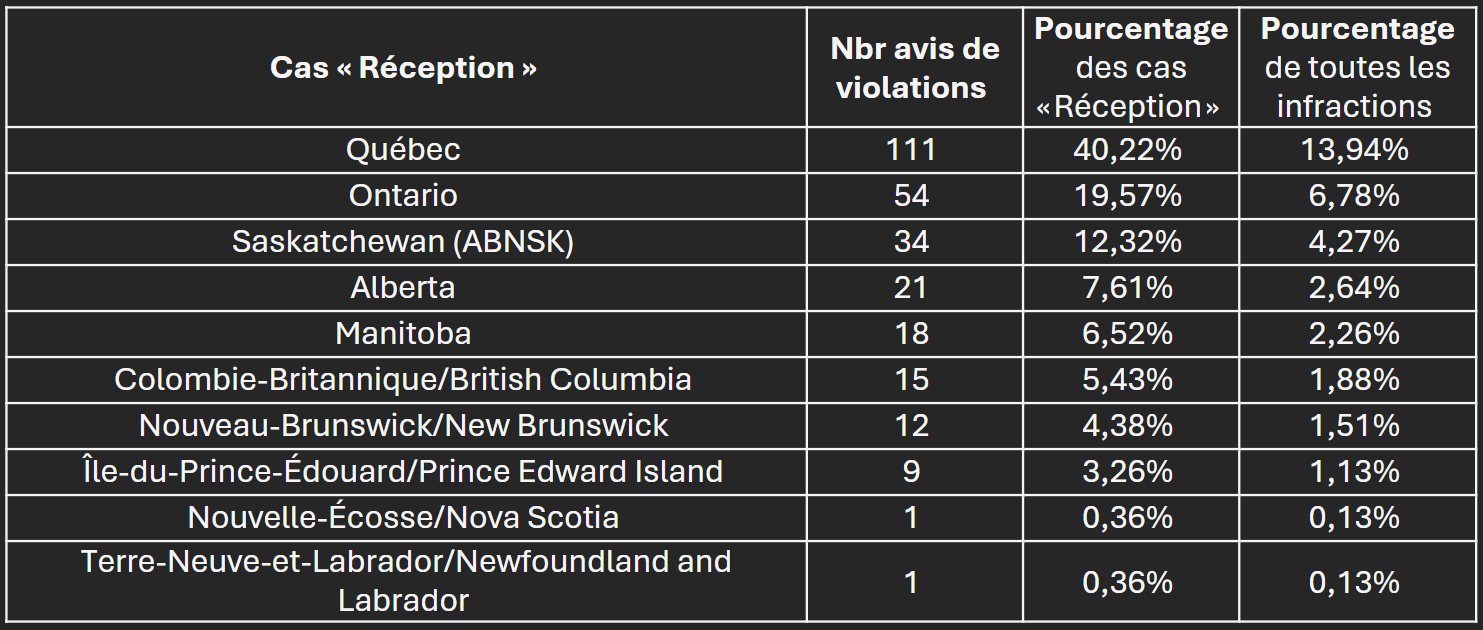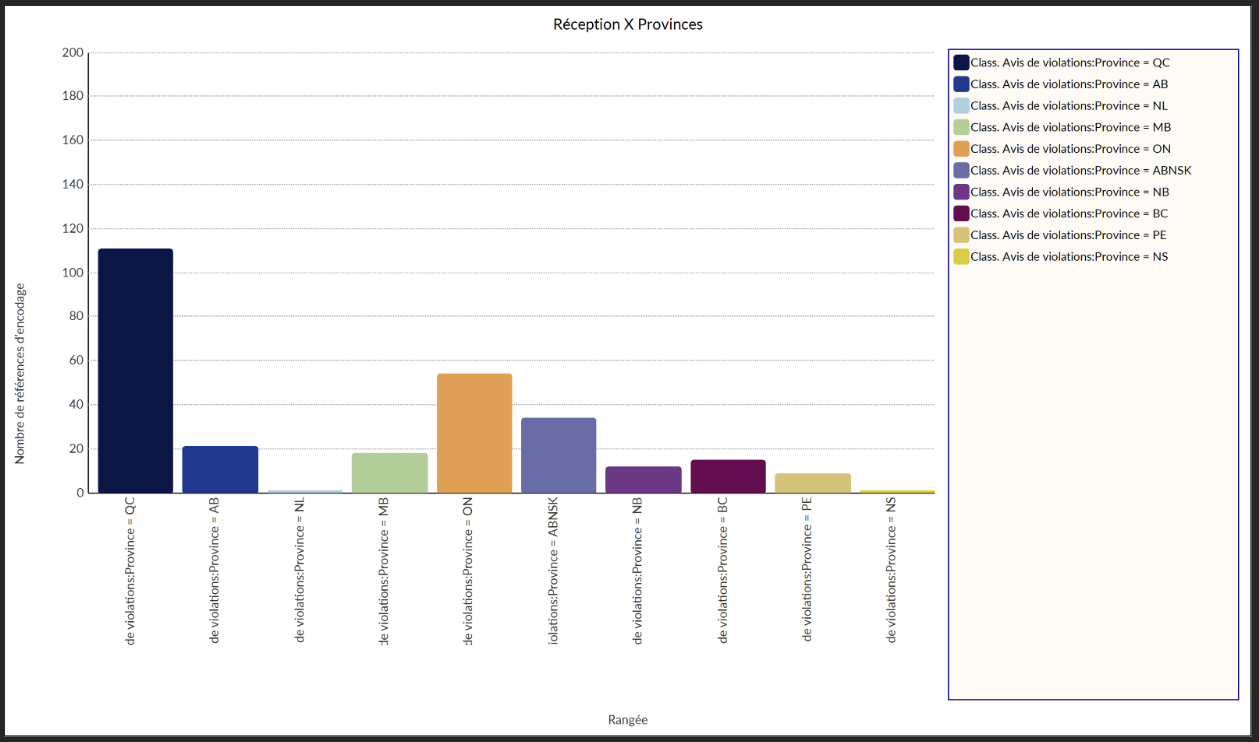PROBLEM STATEMENT
Safe Food for
Canadians Act Modern slaughterhouses are singular spaces for the study of some of the most important debates about how we should be feeding ourselves in the 21st century. Although we tend to hide the activities surrounding the killing of animals from the public sphere, COVID-19 outbreaks in slaughterhouses across Canada (and the world) have rendered visible the way that animals are turned into meat. The meat processing industry is one of the most regulated sectors of our food system.
Federally licensed slaughter and meat processing activities are governed by the Safe Food for Canadians Act (SFCA) and its Regulations. Approximately 95% of food animals in Canada are slaughtered in federal facilities. Subsection 51(1) of the SFCA empowers the CFIA to make regulations respecting food safety programs as well as to establish procedures for the humane treatment and slaughter of animals. Section 24 authorizes CFIA inspectors to ensure regulatory compliance with the SFCA at federally licensed slaughterhouses. With the coming into force of the SFCA in 2019, the CFIA signaled a shift away from prescriptive regulation and towards outcome-based regulation. This shift is largely seen as desirable and consistent with international approaches to science-based standards in food safety governance. Under Canada’s revised food safety system, industry has greater leeway to set slaughter line speeds that may endanger workers and animals before slaughter. For example, there are no set line speed conditions for swine under the Modernised Slaughter Inspection Program for Hogs. Even more industry self-regulation is to be expected in the coming years.
A fast-paced and efficient assembly line is central to modern industrialized methods of meat production. Slaughter lines are designed to disassemble an animal into food as quickly and cheaply as possible. But how fast is too fast? This project examines slaughter line speed regulations in federally-licensed meat and poultry processing facilities to better understand their impact on food safety, worker safety and animal welfare. It brings the legislative and regulatory texts that govern production speeds into dialogue with the government actors who apply them and the workers who experience them.
OBJECTIVES
Safe Food for Canadians Act(1) The empirical objective is to analyze data obtained from Access to Information (ATI) requests filed with the Canadian Food Inspection Agency (CFIA), Alberta’s Workers Compensation Board, Québec’s Commission des normes, de l’équité, de la santé et de la sécurité du travail and Ontario’s Workplace Safety and Insurance Board. In addition to ATI requests, the project also analyses data obtained from interviews with slaughterhouse workers, labour union representatives and current and former CFIA employees to explore if/how high-speed slaughter lines impact compliance with the Safe Food for Canadians Act and its Regulations.
(2) The theoretical objective is to better understand the tensions at the heart of food system governance, where regulators must negotiate between competing policy objectives to advance a particular vision of agri-food production. Focusing on slaughter line speeds serves as a case study to illustrate the transversal effects of regulations in one area of law (food safety) on others (labour law and animal law).
(3) The social objective is to submit slaughter line speeds to ethical scrutiny. The project is not about advancing an argument about whether animal slaughter should be permitted or not. Instead, it seeks to highlight opportunities to improve existing practices.
PROJECT STRUCTURE & METHODOLOGY
This project employs mixed methods combining traditional legal analysis of legislative texts, regulations, and policy guidelines and tribunal/court decisions with empirical research. The empirical part of the project forms the core of the study. First, a quantitative and qualitative analysis was conducted on data obtained through an ATI request with the CFIA. The request was for a list of all Corrective Action Requests (IR-CAR) issued by a CFIA inspector or veterinarian between January 1, 2017 and October 21, 2022 regarding line speed and/or humane handling of animals at federally licensed slaughterhouses and meat processing facilities in Quebec, Ontario and Alberta. A release package shared by the CFIA Access to Information and Privacy Manager contained 796 unique CAR entries that were subsequently coded and analyzed using NVivo software. In addition, between November 2022 and December 2023, semi-structured interviews were conducted with 12 interview participants, including current and former slaughterhouse employees, labour union representations for slaughterhouse employees, one former CFIA senior policy advisor and two current CFIA employees. Notably, attempts to reach a larger number of CFIA inspectors and veterinarians were unsuccessful. Despite multiple attempts over an 18-month period to contact potential participants through formal and informal channels, the majority of requests went unanswered. Individual inspectors were of the view that their professional code of conduct prevents them to speaking to outside researchers while formal CFIA channels either did not respond or responded by telephone with vague promises to forward the request to the right people without ever putting this in writing. This is unfortunate because the insights of CFIA inspectors would be invaluable to contextualize the data obtained through ATI cataloguing past violations. Finally, ATI requests were also submitted to Alberta’s Workers Compensation Board, Québec’s Commission des normes, de l’équité, de la santé et de la sécurité du travail and Ontario’s Workplace Safety and Insurance Board to obtain statistics about the prevalence and nature of workplace accidents and occupational illness among slaughterhouse employees.
RESULTS
What follows are preliminary results of our team’s analysis of the 796 Corrective Action Requests issued by CFIA inspectors between 2017 and 2022 related to humane handling and receiving of animals, humane stunning and bleeding of animals, ante-mortem screening, post-mortem defects, line speed and ritual slaughter.
DISTRIBUTION OF VIOLATIONS AROUND PROVINCES
Ces résultats montrent la distribution des demandes de mesures correctives analysées parmi les provinces canadiennes. These results show the distribution of analyzed Corrective Action Requests among Canadian provinces.
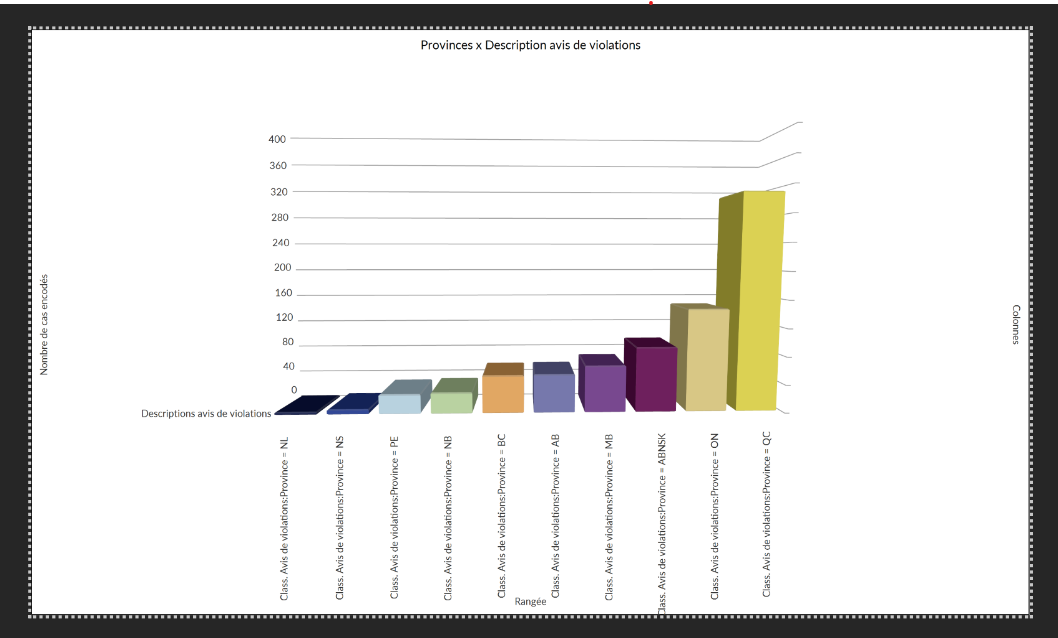
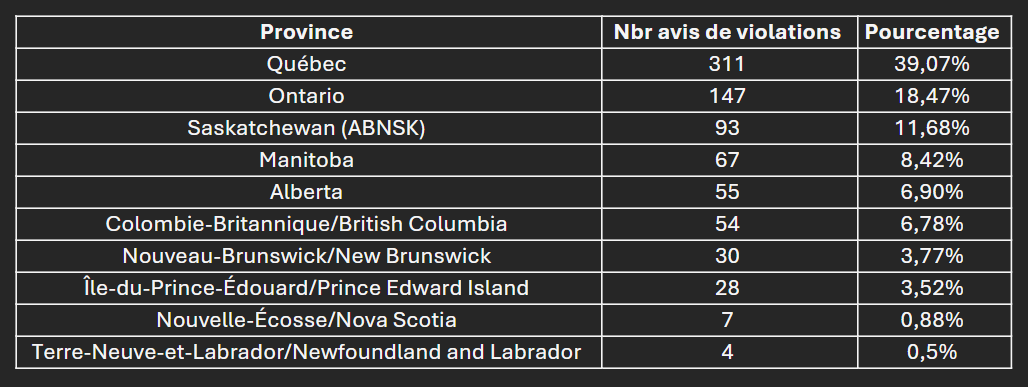
DISTRIBUTION OF VIOLATIONS BETWEEN ANIMAL SPECIES
Ces résultats montrent la distribution des demandes de mesures correctives parmi les différentes espèces d’animaux abattus. These results show the distribution of Corrective Action Requests among the different species of animals slaughtered.
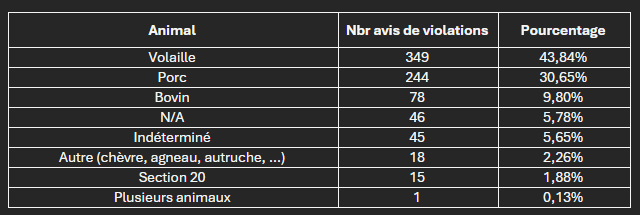
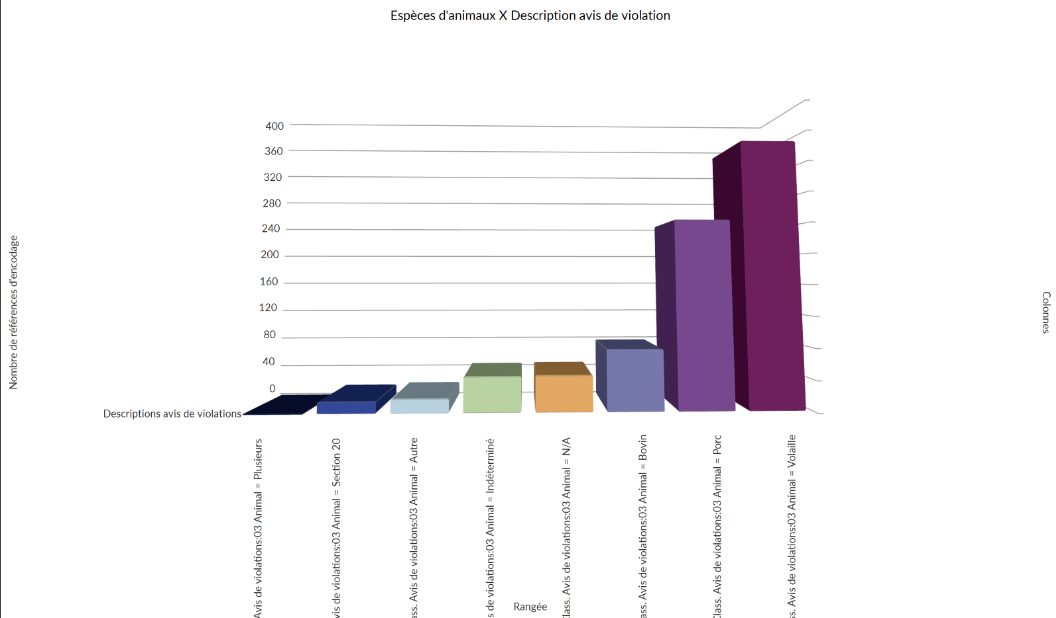
DISTRIBUTION OF VIOLATIONS BETWEEN ANIMAL SPECIES AROUND PROVINCES
Ces résultats montrent la distribution des demandes de mesures correctives en fonction des provinces canadiennes et en fonction des espèces d’animaux abattus. These results show the distribution of Corrective Action requests by Canadian province and by species of animal slaughtered.

FREQUENCY OF VIOLATIONS RELATED TO EACH SPECIES
Ces résultats montrent, pour chaque espèce d’animaux abattus, la distribution des demandes de mesures correctives en fonction des types de violations constatées. These results show, for each species of animal slaughtered, the distribution of Corrective Action Requests according to the type of violation observed.
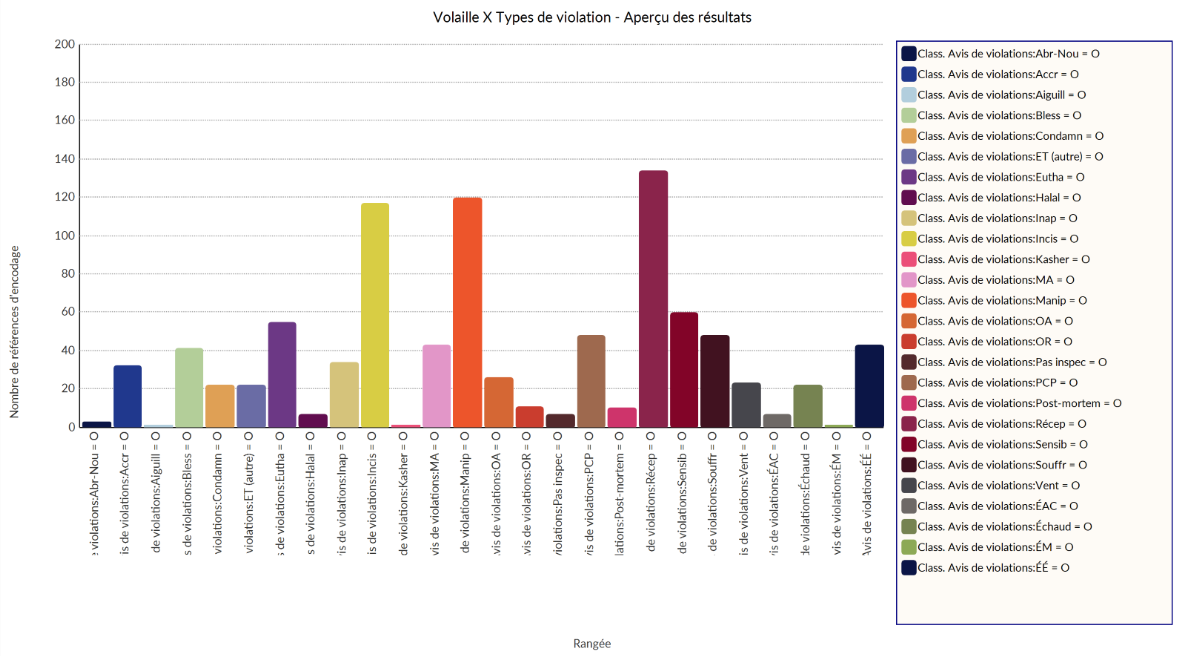
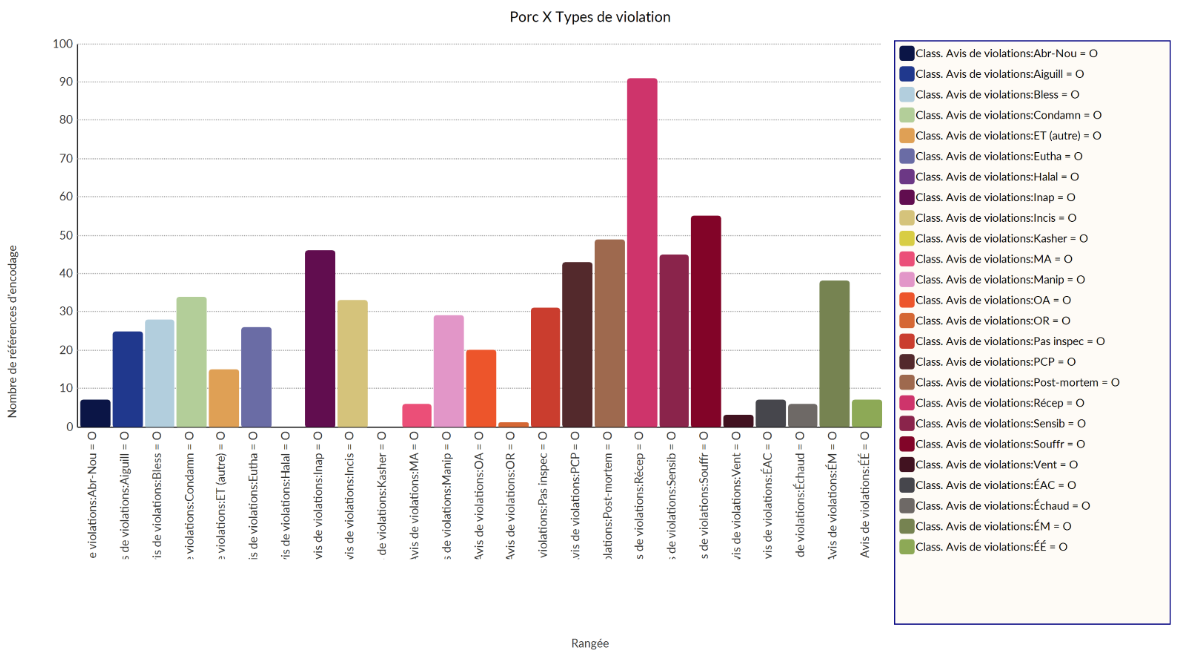
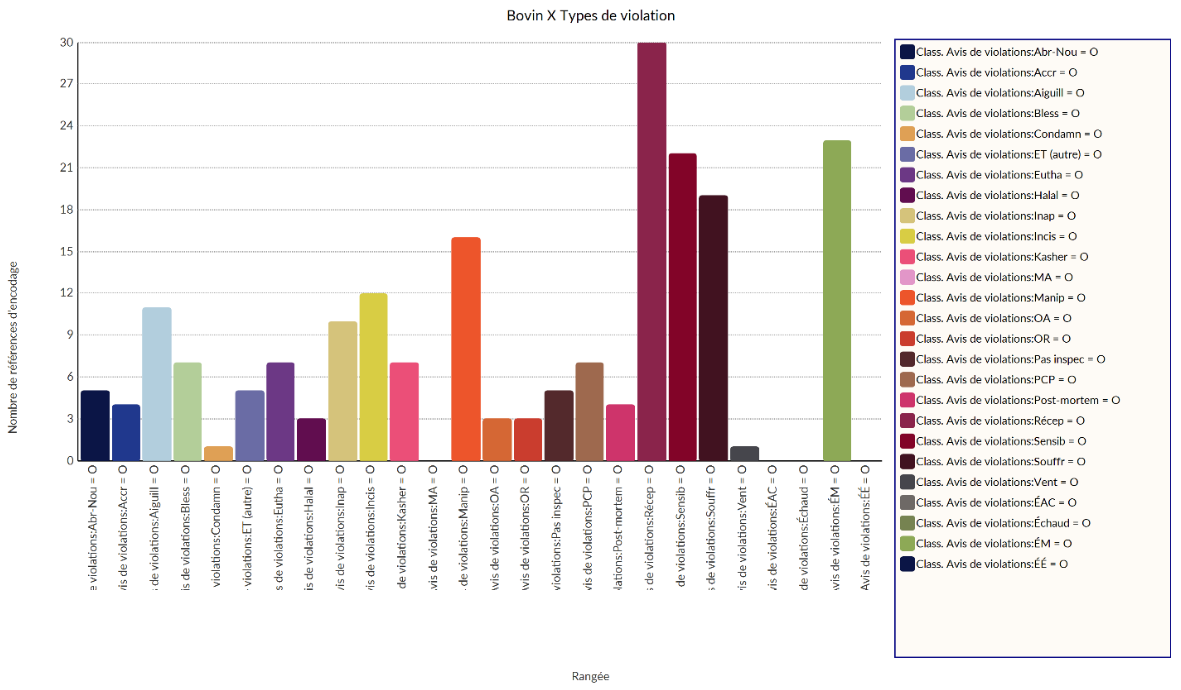
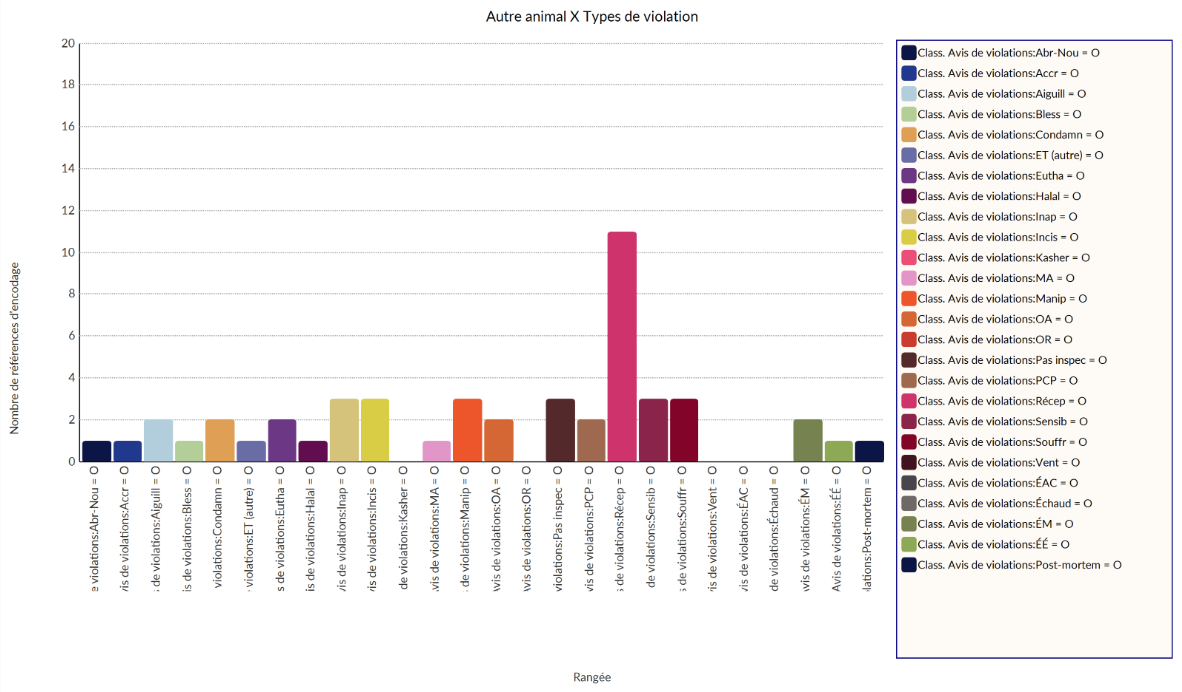
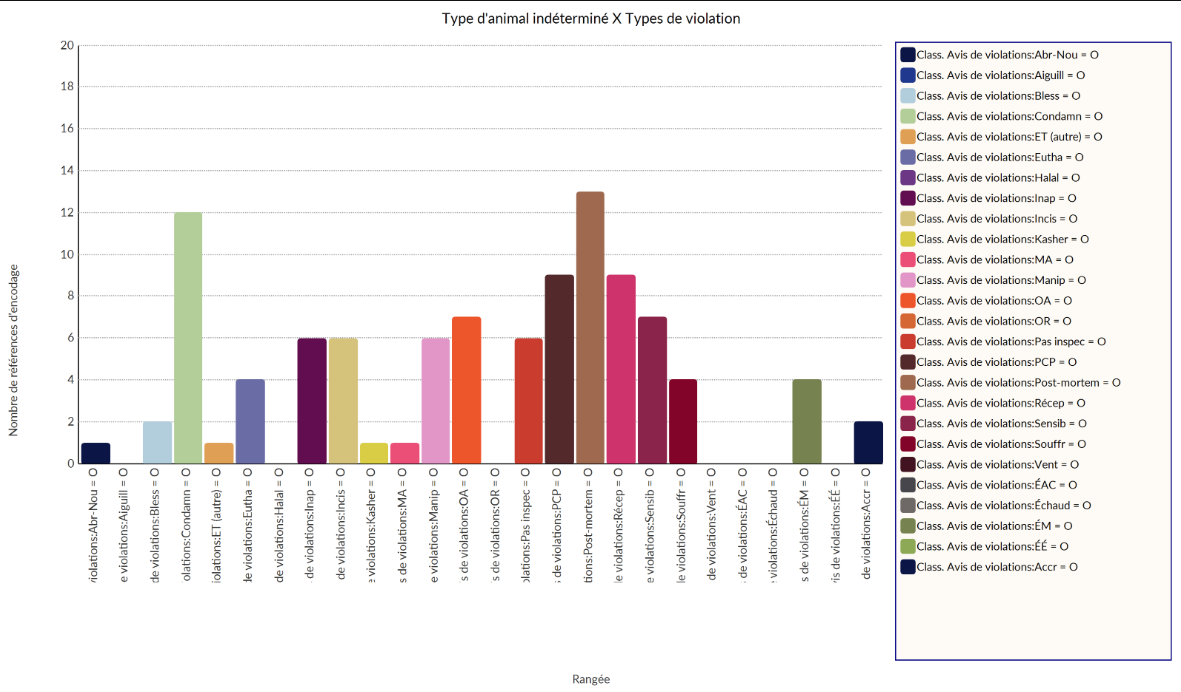
PERCENTAGE OF INFRACTIONS RELATED TO RITUAL SLAUGHTER
Ce tableau montre le nombre de demandes de mesures correctives dans les cas où l’abattage en un rituel (halal ou kasher) ainsi que leur proportion de l’ensemble des demandes de mesures correctives. This table shows the number of Corrective Action Requests in cases where slaughter is ritualized (halal or kosher), and their proportion of all Corrective Action Requests.

DISTRIBUTION OF SLAUGHTER INFRACTIONS AMONG DIFFERENT SPECIES AND PROVINCES
Ces tableaux montrent la distribution des demandes de mesures correctives dans les cas d’abattage rituel en fonction des espèces d’animaux abattus et en fonction des provinces canadiennes. These tables show the breakdown of requests for corrective measures in cases of ritual slaughter, by species of animal slaughtered and by Canadian province.

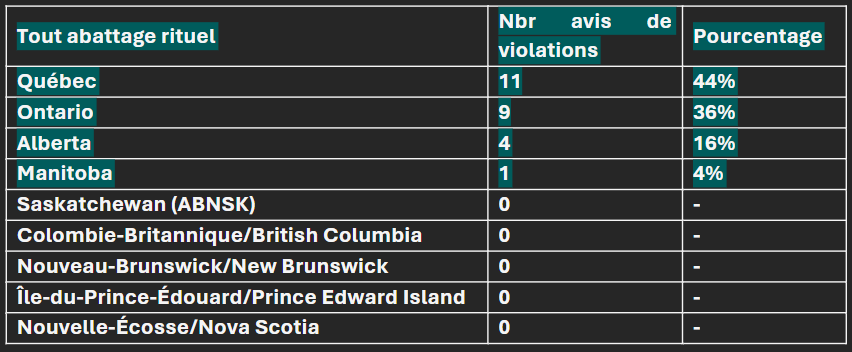
VIOLATIONS RELATED TO HALAL OR KASHER SLAUGHTER
Ces résultats montrent, pour les cas d’abattage rituel, la distribution des demandes de mesures correctives en fonction des types de violations constatées. These results show, for cases of ritual slaughter, the distribution of Corrective Action Requests according to the types of violations observed.
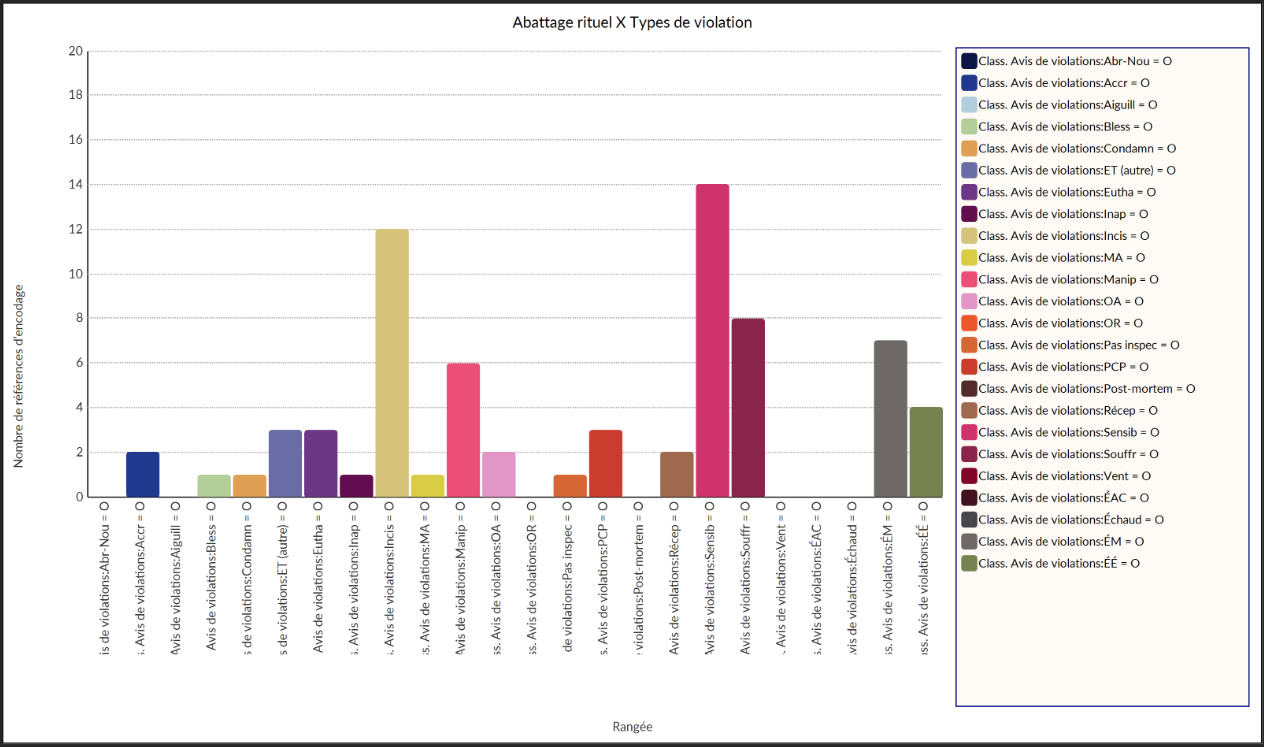
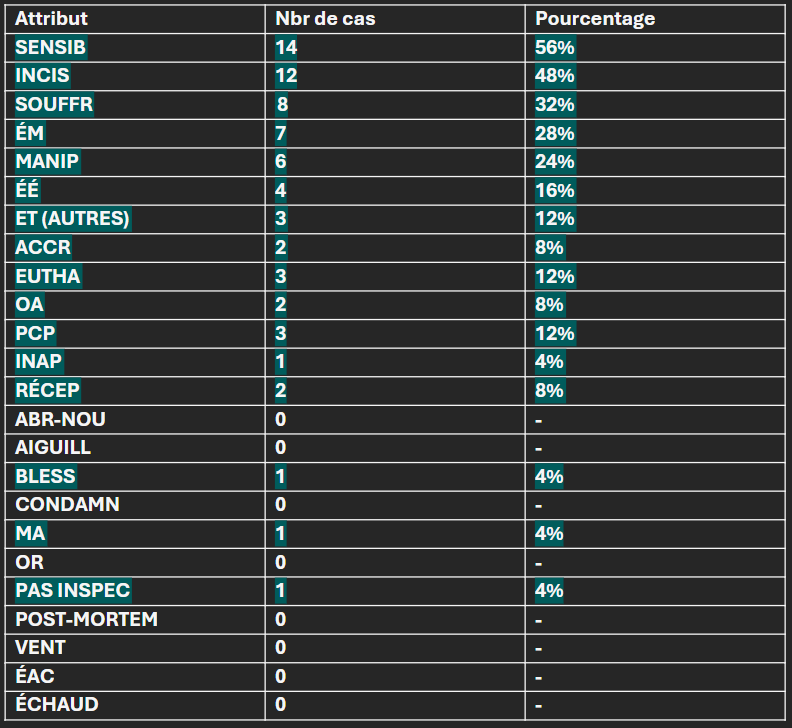
DISTRIBUTION OF VIOLATIONS BEFORE AND AFTER 2019
Ces résultats montrent la distribution des demandes de mesures correctives avant et après 2019, en fonction de la loi applicable. La Loi sur la salubrité des aliments au Canada est entrée en vigueur le 15 janvier 2019 et a remplacé la Loi sur l’inspection des viandes. These results show the distribution of Corrective Action Requests before and after 2019, based on the applicable legislation. The Safe Food for Canadians Act came into force on January 15, 2019, replacing the Meat Inspection Act.
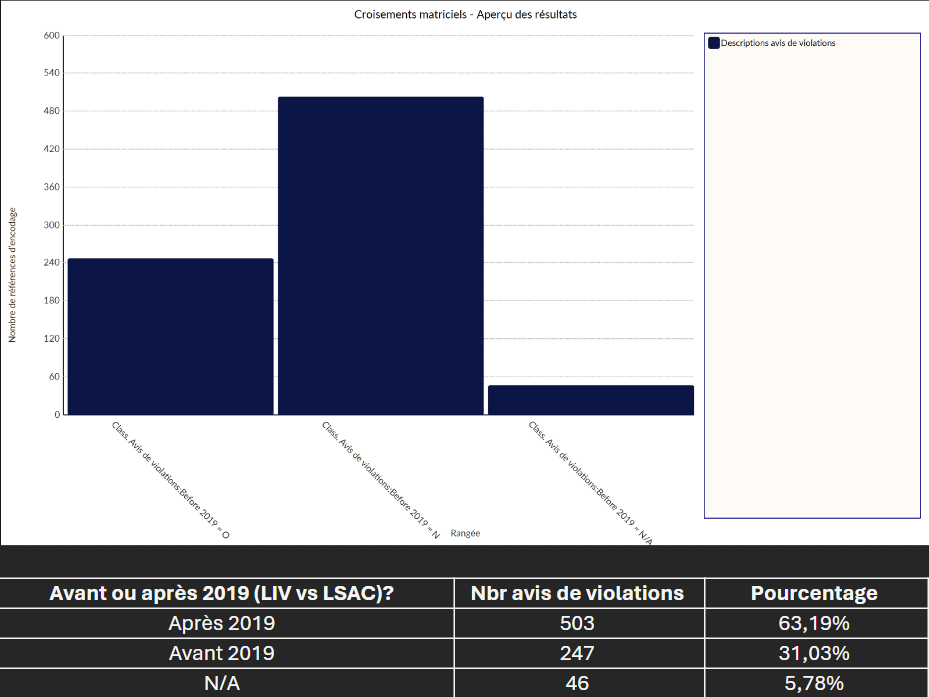
CIRCUMSTANCES SURROUNDING A STOP OR SLOWDOWN ORDER
Ce graphique montre, dans les cas où un ordre d’arrêt ou un ordre de ralentissement de la ligne d’abattage a été émis, la distribution des demandes de mesures correctives en fonction des types de violations constatées. This graph shows the distribution of Corrective Action Requests according to the type of violation observed in cases where a stop order or slow-down order has been issued on the slaughter line.
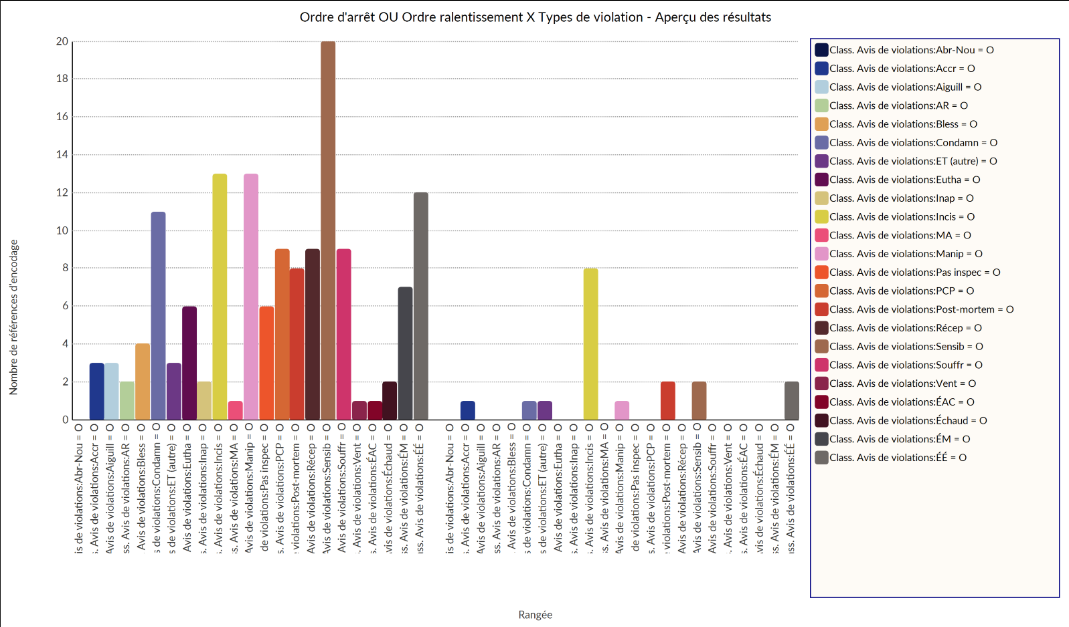
CIRCUMSTANCES SURROUNDING CASES OF SENSITIVITY
Ces résultats montrent la distribution des demandes de mesures correctives dans les cas où l’animal abattu démontrait des signes de retour à la sensibilité en fonction des types de violations constatées (a), des espèces d’animaux abattus (b) et des provinces canadiennes (c). These results show the distribution of Corrective Action Requests in cases where the slaughtered animal showed signs of returning to sentience, according to the type of violation observed (a), the species of animal slaughtered (b) and the Canadian province (c).
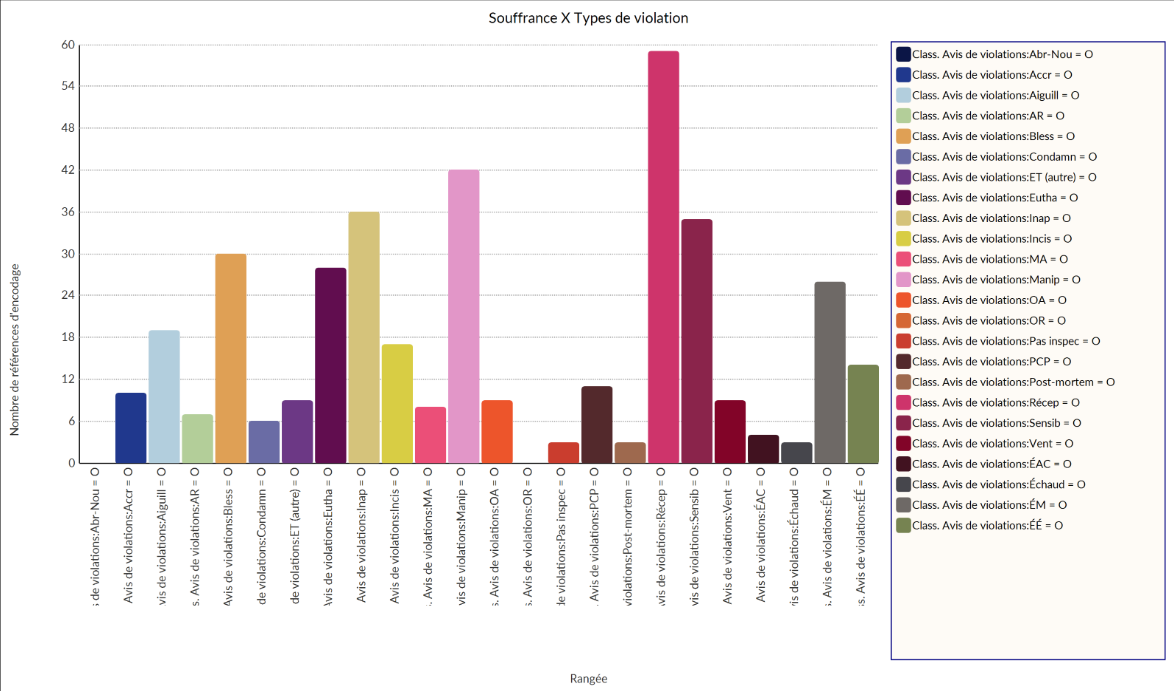
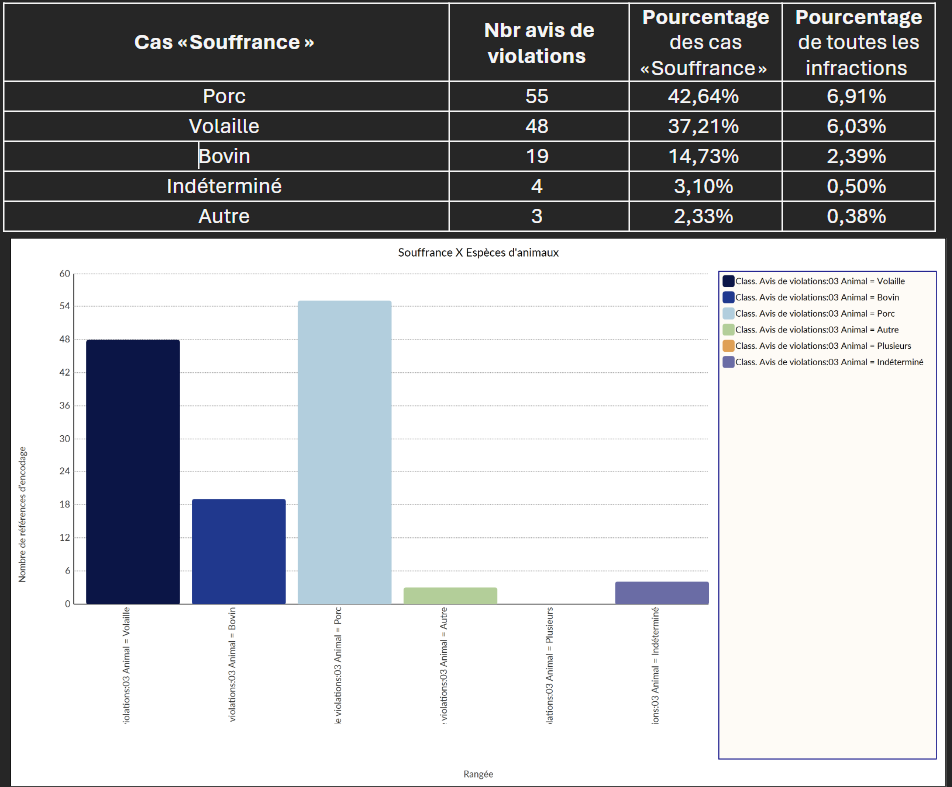
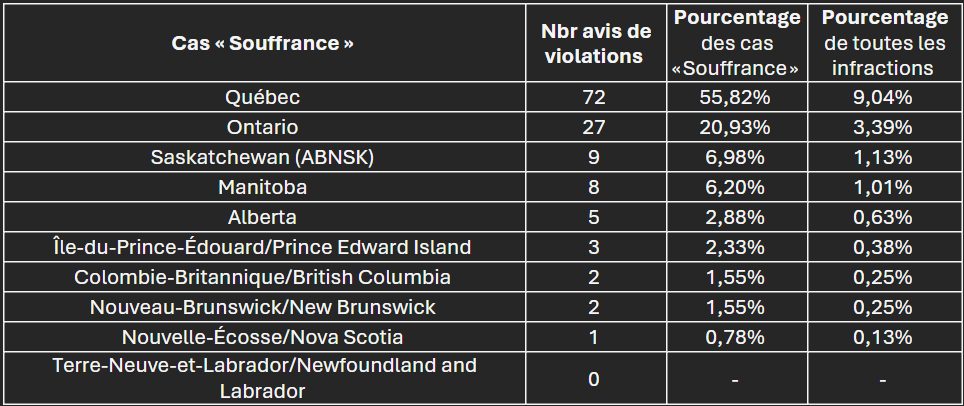
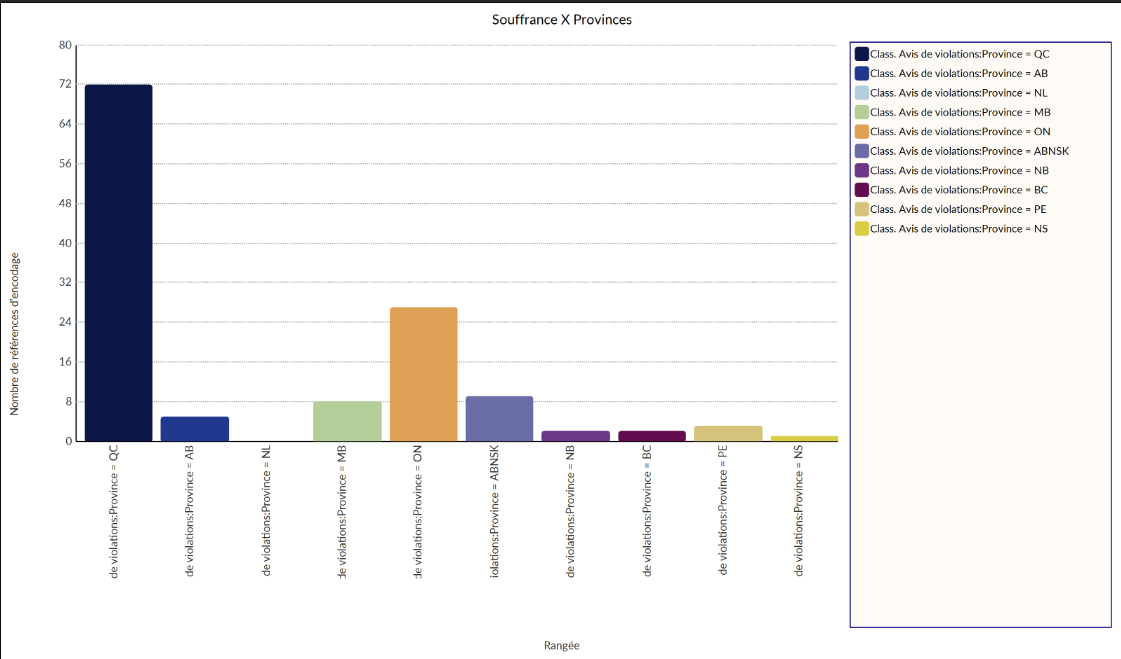
Ces résultats montrent la distribution des demandes de mesures correctives dans les cas où l’animal abattu démontrait des signes de retour à la sensibilité en fonction des types de violations constatées (a), des espèces d’animaux abattus (b) et des provinces canadiennes (c). These results show the distribution of Corrective Action Requests in cases where the slaughtered animal showed signs of returning to sentience, according to the type of violation observed (a), the species of animal slaughtered (b) and the Canadian province (c).
CIRCUMSTANCES SURROUNDING SUFFERING CASES
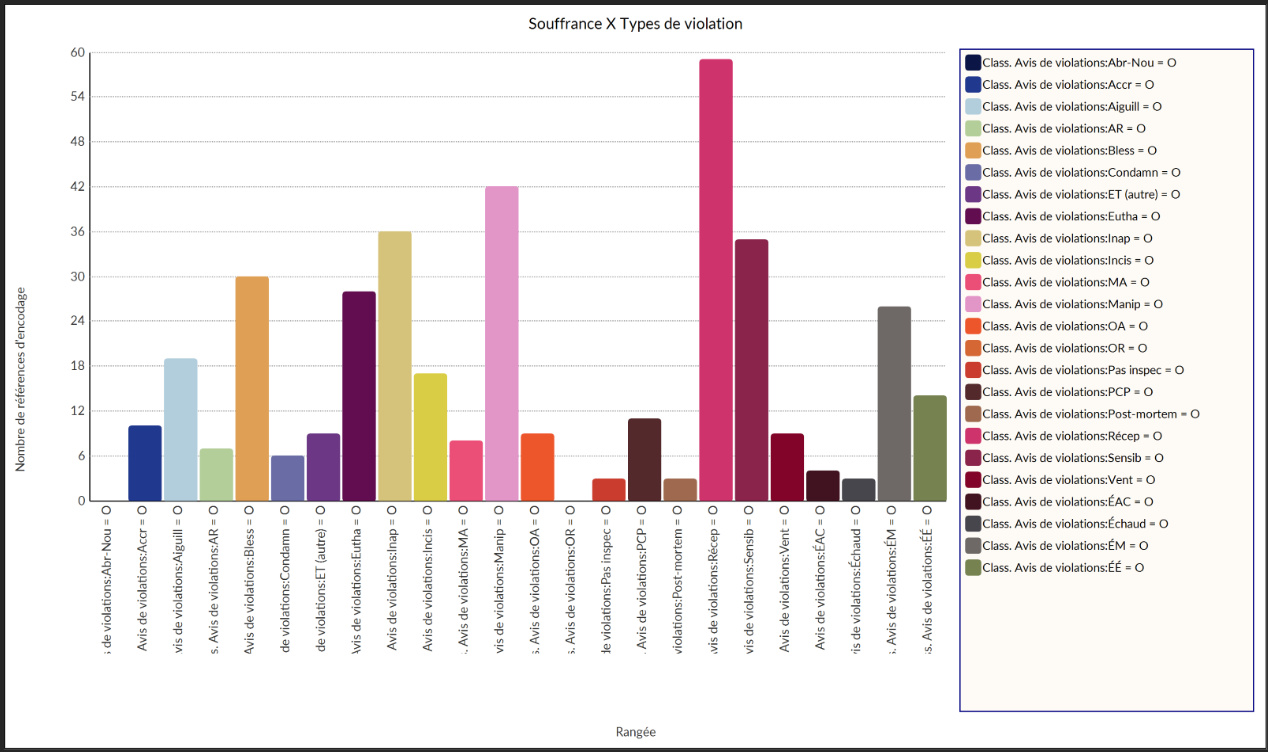
SUFFERING CASES DISTRIBUTION FOR PROVINCES

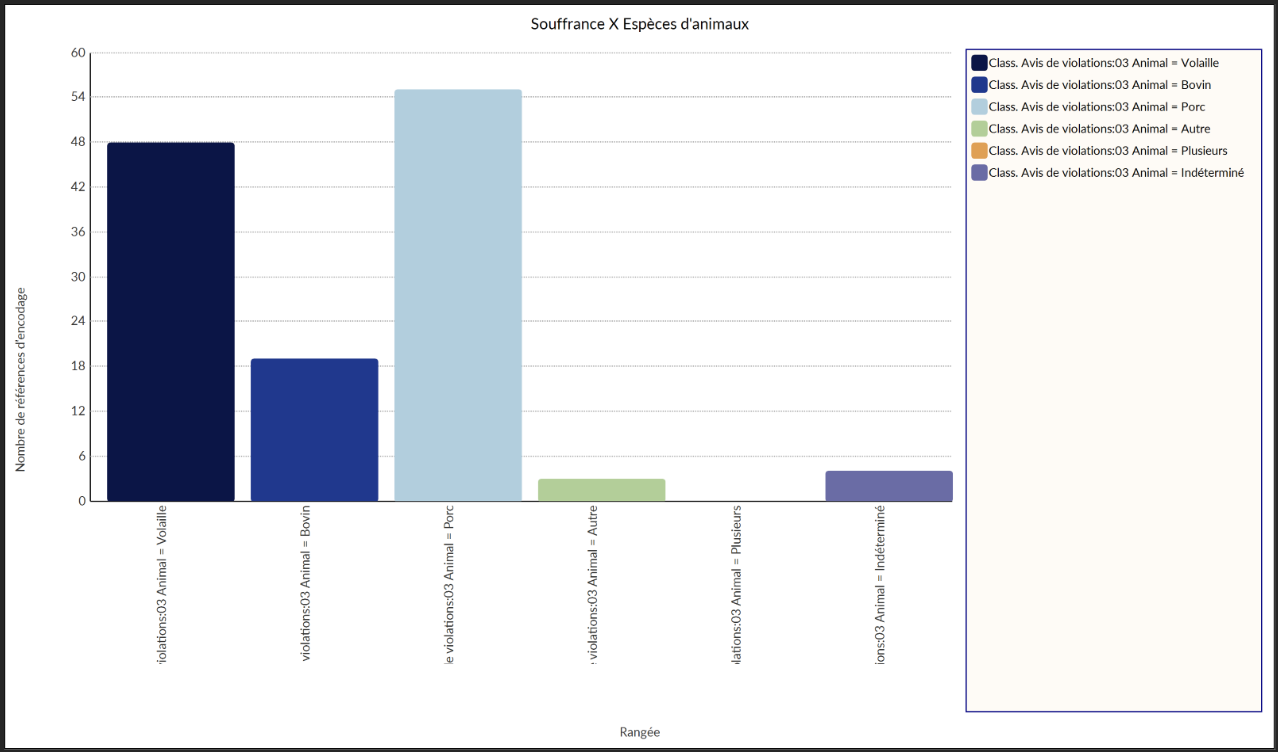
SUFFERING CASES DISTRIBUTION FOR ANIMAL SPECIES
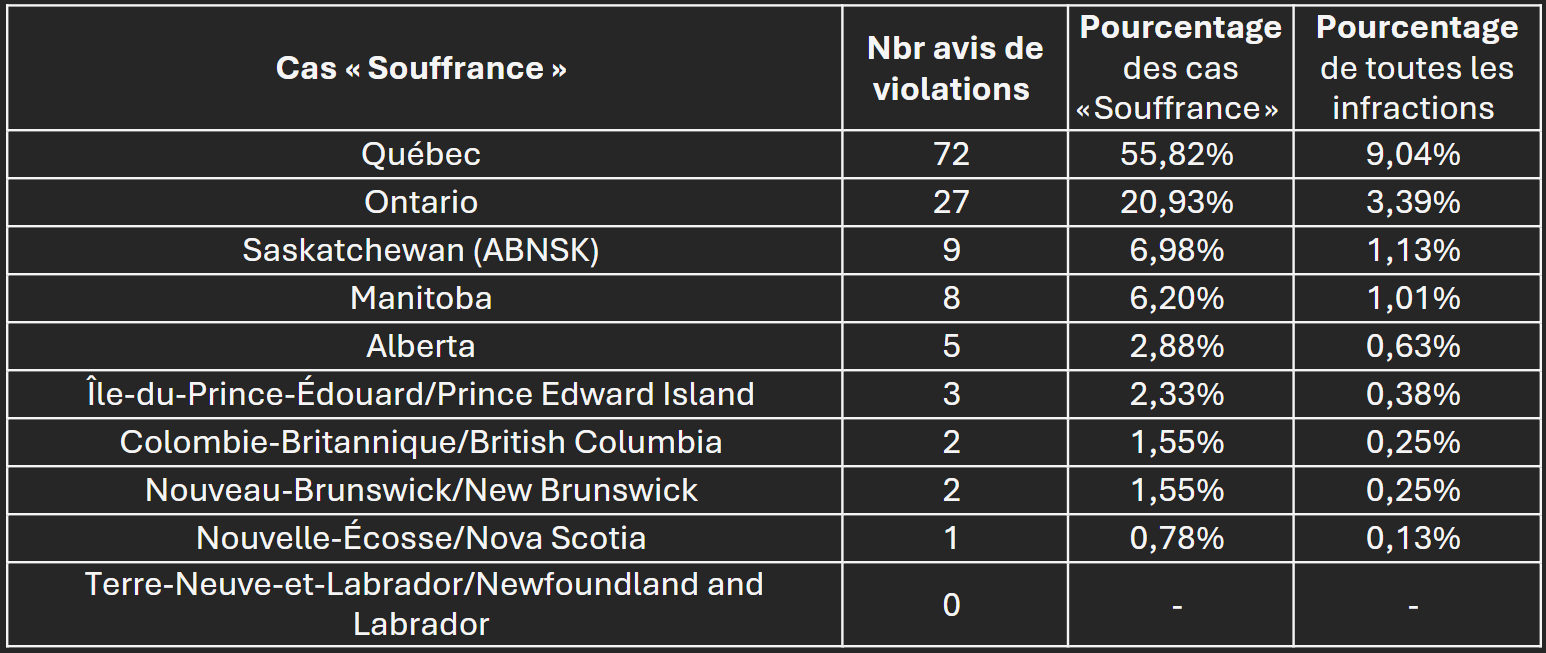
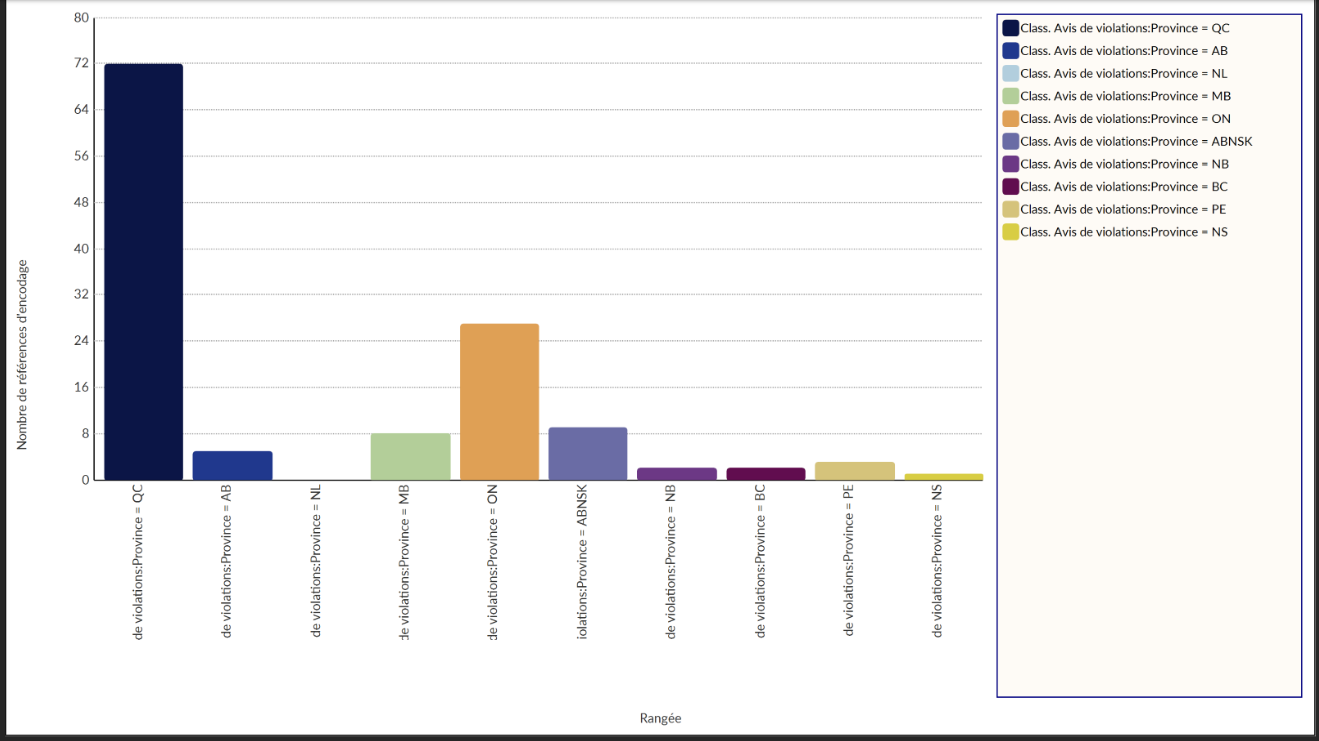
Ces résultats montrent la distribution des demandes de mesures correctives dans les cas où l’infraction se déroulait au moment de la réception des animaux en fonction des types de violations constatées (a), des espèces d’animaux abattus (b) et des provinces canadiennes (c). These results show the distribution of Corrective Action Requests in cases where the violation was taking place at the time the animals were received, by type of violation (a), species of animal slaughtered (b) and Canadian province (c).
CIRCUMSTANCES SURROUNDING RECEPTION CASES

RECEPTION CASES DISTRIBUTION FOR PROVINCES

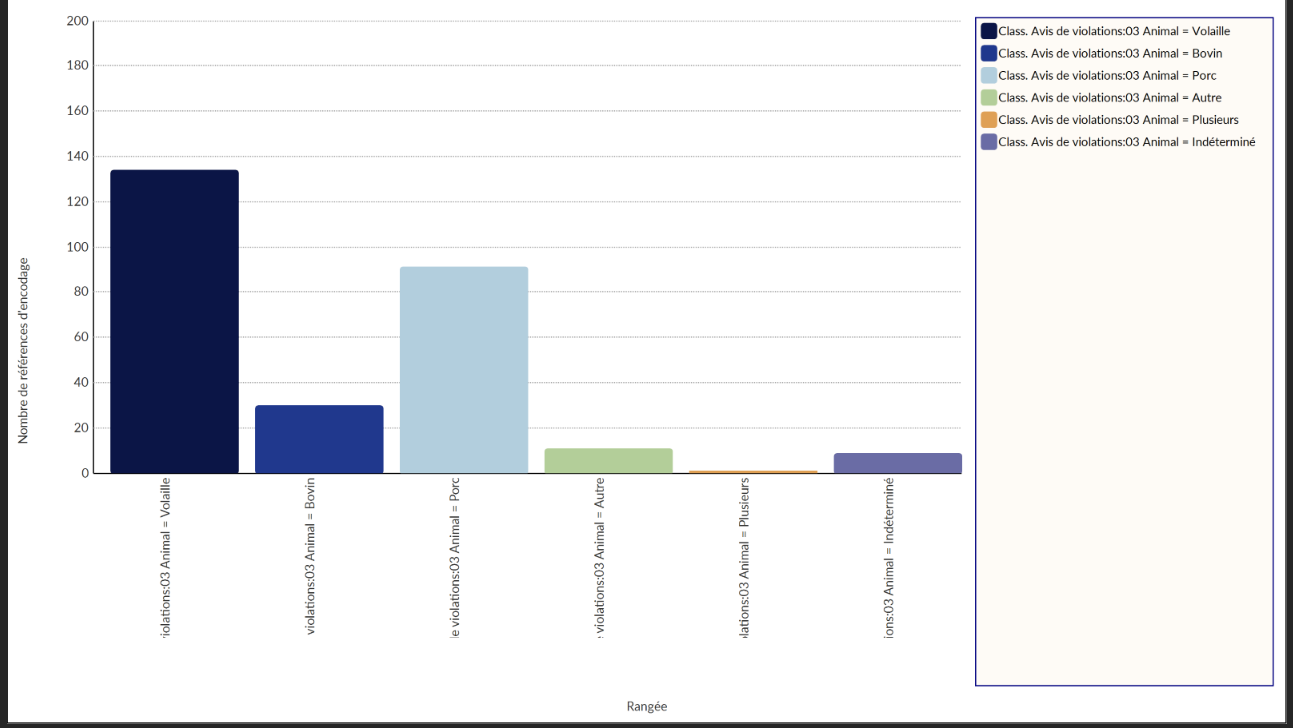
RECEPTION CASES DISTRIBUTION FOR ANIMAL SPECIES
